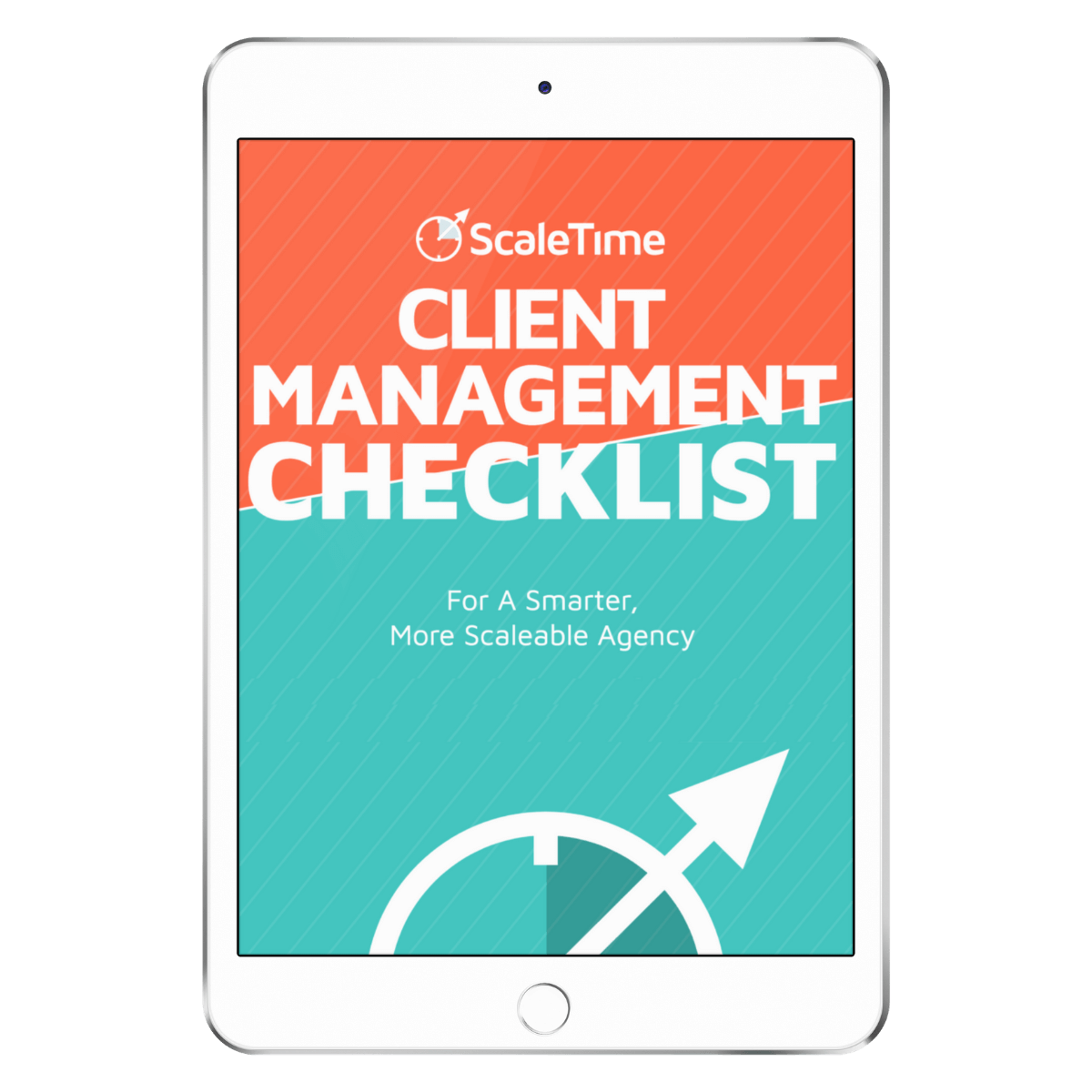

The best part of owning an agency?
It’s all the stuff that happens outside the day to day of your agency – travel, watching your kids play sports, creating cool shit.
It’s letting go and letting your business run like a lean, mean, well-oiled machine. Ahh, priceless! But priceless or not, we have to get a grip on our numbers — the sales process.
If you don’t have one in place yet, grab our free Sales Process Toolkit. We’ll walk you through it step-by-step.
To keep your agency running smoothly and scaling, you must keep track of all your processes, the people, and the performance. Today, we’re going to dive into the agency sales process with the KPIs you need to measure success.
“But Juliana, don’t I just measure revenue when it comes to sales? My sales are great!”
Well, that’s good to hear, and it’s true — your sales process is measured in revenue.
But that’s not all.
Measuring revenue is one thing.
Measuring other top KPIs will help you optimize it, get straight A’s across your sales scorecards, and identify room for growth.
And remember, you want to keep your agency running smoothly. These top sales KPIs will help you do just that. Let’s take a look at the metrics that’ll help you develop an excellent agency sales strategy.

Why you need data to go from good to flat-out great: Sales accountability
If you haven’t already, you need to start making decisions based on data, not feelings. The more we use data to make decisions, the more objective our choices will be. Ultimately, this will make our business more agile.
The thing is, inaction costs money. When we don’t have the data we need, we won’t act. So, having data makes it easier for us to act and to make accurate decisions.
Am I saying eff it to feelings? No. Sometimes it’s good to listen to our gut.
But looking at the data instead of relying just on feelings will save us time and money in the long run while keeping sales accountable to raw, hard numbers.
Profitability: The King KPI
All right, there are different types of profitability. But let’s keep it simple so we can get a grip on our actual sales numbers. What’s the simplest profitability KPI?
Sales minus costs.
That’s where you get your bottom line or your profit margins. When you look at this super simple metric, it gives you the ability to identify and cut the fat.
So, why is this important? It all goes back to sales accountability. When you’re able to see where things are dragging, you can cut that out and make your business more agile and profitable.
Customer Acquisition Costs KPI (CAC)
Everyone and their uncle claims to be a marketer nowadays. No matter what, though, marketing is getting super competitive. Measuring how much it costs to get a new customer will help you keep these costs reasonable.
Here’s how you measure it:
CAC = costs related to getting new customers divided by the number of customers.
And here’s an example:
Let’s say a SaaS company spends 20K on a marketing campaign and customer acquisition expenses. They get 3500 new customers from this campaign.
So, 20,000 divided by 3,500 is 5.71. It costs the company $5.71 (CAC) to acquire each customer through this campaign.
Average Sales Cycle Length KPI
“How long is this lead going to take to close? Oh crap. I don’t know if I can keep the lights on next month. Good thing I like Ramen. ”
Measuring the average sales cycle length will make your sales forecasts more predictable. Get a certain number of leads, and you’ll know what your numbers will look like down the line.
This KPI can help reduce the whole feast or famine thing. If you measure this KPI and decide to reduce it, you can boost your revenue growth.
Keep in mind that if you sell to small business owners, your sales cycle will be shorter than if you sell primarily to enterprises. Also, customized products and services will have a longer sales cycle than something pre-made.
Where you get your leads is also going to impact this KPI. Outbound lead generation where there’s low purchase intent will equal a longer sales cycle. To make sure you get an accurate picture, segment the equation down to:
- Lead source
- Prospect size
- Product sold
First step:
Add the (X#) of days from the first contact to customer conversion for all deals = Total (X#) of days for sales combined.
Next step:
Total (X#) of days for all sales combined divided by (X#) of deals = (X#) of days to the average sales cycle.
It’s essential to measure average sales cycle KPI before diving into the next — SQL, or Sales Qualified Leads, to win conversion rate.
SQL to Win Conversion Rate
Sales and marketing need to be aligned to keep the entire sales process running smoothly.
Sales Qualified Leads (SQLs) represent those prospects that have expressed enough interest in your business to officially enter the sales process.
Measuring SQL to win helps your teams stay on the same page regarding the volume and lead quality that marketing passes off to the sales team for sales proposals.
With this KPI, you’ll know conversion rates and gain the insight needed to pinpoint opportunities to improve your agency sales cycle. This KPI will improve sales accountability.
How so?
It helps uncover efficiency deal closers and if there are any problems with the quality of sales opportunities. Conversion rates can indicate whether or not there’s something wrong with lead generation efforts. So, here’s how to measure it:
(X#) of deals won divided by (X#) of sales qualified leads equals the (X#) win conversion rate.
Measuring Sales Process KPIs: Key Takeaways and Action Steps
All right, it’s execution time. The first step, grab a copy of your P&Ls going back the last six months.
“Uhhh, what are P&Ls? Don’t think I have those . . . “
Then that’s your first step. You need the data from your profits and losses (P&L’s) for the last six months to even begin measuring your sales KPIs. It won’t take too long, and you should be doing P&Ls once per month.
Okay, got your P&Ls? Calculate your profitability and find your profit margin.
Do it per client or per service if you’re a full-stack agency. This will help you identify the clients or services that are costing too much.
“I’ve got some loss leaders, but I upsell!”
Well, okay then. Include upsells in your total revenue.
The key takeaway? Be ruthlessly honest with yourself, especially when reviewing profitability per client. Remember, it’s basing decisions on data and not emotions that are going to make you scale.
Use your sales process KPIs to get hyper-intentional about how you design your business, make decisions, and overall, run your agency.
Now, go out there and kick some as$, Gladiator!




















%20(1).gif)
